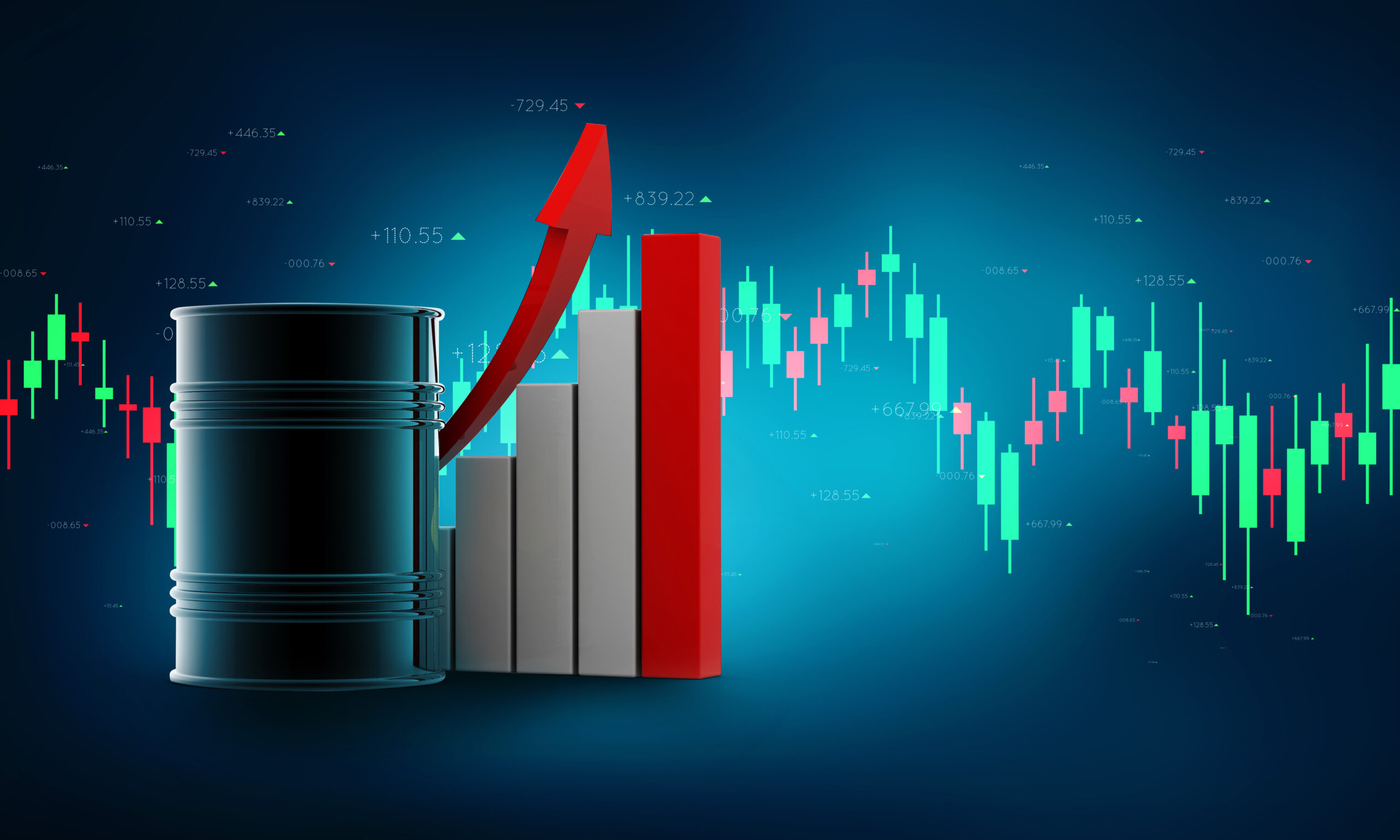The Most Important Chemical Industry Issues & Pricing Strategies for 2022
December 29th, 2021 (Updated 04/04/2024) | 9 min. read
By Robert Smith
The New Year is upon us and the strategic planning processes in major chemical companies have now delivered their 2022 strategic business plans. All of them are backed by forecasts and major assumptions on the biggest chemical industry issues like sales volumes, prices, costs, and resulting margins. Now a key question is whether a pricing strategy and plan has been developed and communicated to deliver on the outcomes promised to shareholders and stakeholders.
This all comes in the face of seeing in the last 12-to-18 months, the chemical industry worldwide having been under siege by an ever-evolving series of challenges, including shortages of raw materials, supply chain bottlenecks, shipping and trucking delays, unprecedented cost increases and inflation, plant shutdowns and restrictions on movement, and a whole lot more.
For example, diesel trucks and the people who drive them have been severely affected by a shortage of urea. Urea is used as a primary ingredient in Diesel Exhaust Fluid to keep diesel fuel running cleanly as a part of clean air policy. However, in 2021, the world’s leading producer of urea, China, has stopped exportation of the product leading to rising fuel costs and decreased diesel availability. What’s more, it has become difficult to source people to drive the trucks in the first place. Roll into that the fact that urea is also a primary ingredient in fertilizer to increase yields in food production, doubling down to a rise in food prices and shortages. It is only one small example of the disruption currently underway and the global complexities that surround putting an effective and up-to-date chemical pricing strategy in place.
Every chemical industry player will need a pricing strategy in place for 2022 and it will need to be a good one. Fluctuating costs eat into margins, and now is the time to become proactive. You’ll need to align your pricing strategy with your overall business objectives, while simultaneously meeting the demands of emerging customer needs. By failing to react quickly to the rapid chemical industry changes currently at play, the risk of being a victim of responding to the price movements of your competitors rather than setting them is a very real one.
At Pricefx, we have been analyzing chemical sales and pricing data and setting automated pricing processes for our clients over the last 10 years, helping them to make nimble, focused, and accurate real-time price changes and proactively protecting their margins
In this article, we focus on staying on top of your company’s pricing game in 2022 by focusing on key metrics driving success for chemical companies and refining what you do by implementing the top data-driven chemical industry pricing strategies for the year ahead.
Factors to Support the Chemical Industry Strategic Planning Process
As business strategies are set, the task at hand turns to developing a strategic pricing plan to enable achievement of overall business goals. Achieving margin targets to support earnings goals will be a priority. Some factors to consider on the strategy and resulting tactics:
- Commodity products versus specialty products: Most businesses have a balance. Each end of the spectrum implies different strategies and approaches. Most commodity product areas require high focus on underlying costs and frequent price changes to enable nimble actions to achieve margin goals. In the specialty area, recognition of differential value is critical, with pricing reflecting those differences. Rapid price adjustments are infrequent here, but significant changes in underlying costs (particularly logistics) can drive surcharges or more frequent price actions.
- Seeing the end in mind: With goals and forecasts in hand, what price movements will be expected during the course of the year, and at what times and for what products and services? Don’t leave this to chance – have a plan for price adjustment for the full year ahead to be proactive to meet earnings expectations. Pricing remains the highest lever available to support earnings goals.
- Expecting the unexpected: The last 18 months have taught us that our plans must be flexible and adaptable. Review progress on pricing and margin performance frequently and be prepared to make course corrections to the initial plan to stay on target for margin and earnings goals. Nothing is certain!
- Leveraging data and technology: It’s a lot easier to stay on top of current and projected performance when historical and forecast data on pricing and sales are leveraged through analytics as well as AI/ML based pricing software. Companies with these capabilities will be more nimble on price adjustments, more effective in empowering sales personnel with accurate pricing targets and guardrails, and more successful in achieving margin and earnings goals.
Therefore, your pricing strategy will become less like guesswork and more of a science. Setting earnings targets based on supply, demand, the ability to source raw materials and projection on prices to protect margins will be your pathway to a successful pricing strategy. However, ideally, those numbers will be specific to your business and not reacting to the price movements of others.
What is most important to the potential 2022 success of your chemical company’s pricing strategy is that you have one and communicated clearly to all relevant stakeholders in the organization.
Become more focused, flexible, proactive, and agile in your pricing reactions.
Remember, pricing is not a ‘set and forget.’ Setting data-driven and innovative pricing strategies to increase profit will require constant attention and updating as the rate of change and uncertainty is not expected to stagnate in the year ahead.
The Most Important Business Metrics to Track in 2022 and Why

Once the business and pricing plans are in place, it becomes critical to focus on the right metrics to monitor progress and forecasted outcomes. A keen focus on these will enable the enterprise to be nimble when things begin to go off course and will allow timely adjustments to stay on track for goal attainment. Metrics of importance can be categorized into three groups:
1. The usual suspects: Always critical in the chemical industry are total revenue, volume, contribution margin, earnings, and direct and indirect costs. Contribution margin is historically the holy grail for the pricing team and a metric requiring attention at the product, market, and customer level, as well as for the total business.
2. The lifeline: Research & Development Spend + Vitality Index (Revenue Growth from New Products): Understanding and meeting customer needs is the key to growth. Our world is changing more rapidly than ever, and it’s impacting what is expected from the chemical industry. Overlooking this area in the face of industry challenges may provide short term gain, but ultimately will lead to decline or demise in the enterprise. How much of your revenue is generated from new products to market?
3. What’s become critical in the past 12-18 months
- Customer Churn: Are you losing customers by not being able to deliver your chemical products on time and they are heading elsewhere? Or alternatively, are your customers staying put with you because they consider ‘it is better doing business with the devil I know.’ Leverage data and analytics to constantly monitor business gains and losses, and the reasons for them. It costs a lot less to retain a customer than to find a new one. Utilize learnings to retain current customers and gain ones that align with strategy.
- On time delivery percentage: What percentage of your goods are arriving on time? If your chemicals are being delivered late, how late? Customer satisfaction in this area has only increased in importance over the past year. It’s worth a premium and can and should be reflected in your pricing approach.
- Distribution Costs: The enormous price fluctuations in fuel costs, work force shortages leading to increased wage bills, and shortages of truck,ship, rail, and even wooden pallet availability leading to cost increases are all expected to continue at unparalleled rates in 2022. Vigilance on cost oversight in this area and diligence in passing on increased costs is needed to achieve margin and earnings goals. These costs tend to be under the radar in some company cost systems and must be made visible to allow for agility in corresponding pricing actions.
The Top Component of a Great Chemical Industry Pricing Strategy in 2022

By leveraging data analytics to unlock the power of the above metrics, you’ll be able to effectively stay on top of the anticipated rapid changes in the chemical industry in 2022.
After tracking the metrics that apply to your unique business model you will want to be sure that you are proactively setting your own prices. Don’t get caught up in simply following what your competitors are doing. Your competitors may have different goals and objectives that have simply nothing at all to do with how your company operates.
Be equipped and ready to embrace change quickly, prepared to switch mid-stream at short notice if necessary.
Enhancing your pricing response times and reactions (to any raw material price index for example) will empower your chemical company the ability to pivot and apply a pricing strategy optimized to increase profitability.
Naturally, activating data analytics offered by modern AI-ML based pricing software will become your best friend in facilitating your business’s ability to shift your prices in real time.
How to be Proactive in Managing Price Fluctuations in 2022
Now you have unearthed that the secret of your potential pricing success for 2022 is a data enriched one that scientifically analyzes your organization’s unique place in the chemical industry. What’s more, your pricing team can quickly realize results by implementing data to successfully address your challenges for the year ahead.
Pricing software provides a flexible solution to all the above issues to support your team’s ability to achieve your 2022 profitability goals. At Pricefx, we ticked off New Year goals too as we have updated our range of pricing software products for 2022.
If you would like to learn more about being proactive and responding positively to the supply chain and price fluctuation challenges mentioned above, check out our recent blog article:
